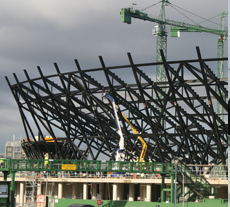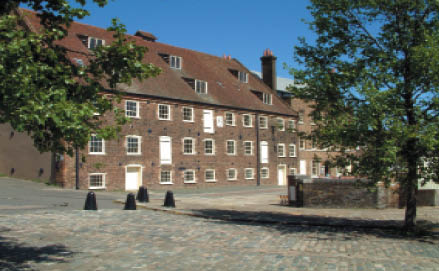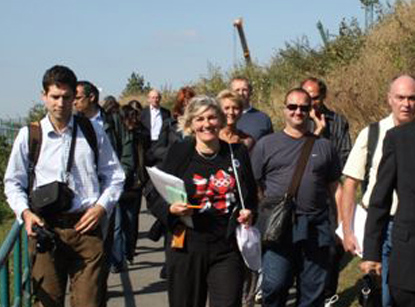As London gears up to host the 2012 Olympic and Paralympic Games, extensive work and building development is going on in certain parts of the city. By 2012, these select sites will be playing a crucial role in the games and will become the venues where sports people, Olympic spectators and tourists will be flocking.
 Many of the development locations are currently off the usual tourist trail. So, if you’d like a little different view of London, before the rest of the world catches on, then try a walking tour of the Olympic sites and get a glimpse of history in the making.
Many of the development locations are currently off the usual tourist trail. So, if you’d like a little different view of London, before the rest of the world catches on, then try a walking tour of the Olympic sites and get a glimpse of history in the making.
Special walking tours have been created to show people around the key sites and access special development viewing areas. The tours are led by Blue Badge Guides; they are available in multiple languages, and they offer a great way of witnessing the transformation of under-developed real estate into an exciting London Olympic Park.
The walking tours are proving to be quite popular, especially of the main Olympic Park area in East London. There are now tours every Saturday and Sunday, starting at 11am from the Bromley-by-Bow underground station (on the District, Hammersmith and City lines).
Historic London
This tour route takes you along the Lower Lea River Valley, on a tow path and past the old locks. In addition to the Olympic 2012 sites, you also get a glimpse of some of London’s Victorian and Georgian industrial  heritage, which offers quite a contrast between old and new. For example, the walk takes you past Three Mills Island, on the River Lea, which is the site of former working mills and is one of London’s oldest industrial areas.
heritage, which offers quite a contrast between old and new. For example, the walk takes you past Three Mills Island, on the River Lea, which is the site of former working mills and is one of London’s oldest industrial areas.
Three Mills Island is London’s oldest surviving industrial centre and is home to a grade I listed House Mill. The mills ceased operating in 1941due to heavy bombing in the area and are believed to be some of the largest and most powerful tidal mills in the world. The mills date back to the 11th century and were mentioned in the Domesday Book.
The House Mill is owned and operated by a charitable trust, the River Lea Tidal Mill Trust, and is open on Sunday afternoons – from April to October – for guided tours. If you want to find out more about the history of the building, then it’s suggested that you return to the building upon completing the 2012 site tour.
The island is also the home to 3 Mills Studios (made up of Bow Studios, 3 Mills Island Studio, and Edwin Shirley Productions), the largest working film studio in inner London, where many TV shows, films and music videos are made.
New London and the Olympic Park
In contrast to the historical and industrial areas of Three Mills Island, as the walk wends on, you reach the modern development that will eventually become the Olympic Park.
The development is on a vast scale – 500 acres – and it’s hard to imagine just how big it is until you see it for yourself. Workers on the site, for example, don’t walk from location to location, they’re driven around in buses,  as the area under development is so large. And this reclaimed, regenerated land will soon become the largest urban park developed in Europe in over 150 years.
as the area under development is so large. And this reclaimed, regenerated land will soon become the largest urban park developed in Europe in over 150 years.
A special visitor centre and viewing platform has been created to ensure that you can safely see what’s going on, as each construction site is not open to members of the public. In fact, at this stage, it is pretty much just a giant construction site, so you’ll need to exercise your imagination to envisage what it will be like on opening day. And it is, of course, very interesting to watch the ever changing structures move toward their final shapes, all the while modifying the London landscape.
The tour encompasses a number of venues, to include: the main 80,000 seat Olympic Stadium where much of the of the action will take place, and where dreams will be made and hopes lost; as well as the Aquatic Centre, the massive International Broadcast Centre, the Olympic Village and the Velodrome.
The walking tour lasts about two hours and numbers are restricted to 20 to 25 people for each tour. You do have to book your place in advance, but you pay in cash on the day of your tour.
To book, see: Tours of 2012 Sites or Olympic tour walk guides


Comments